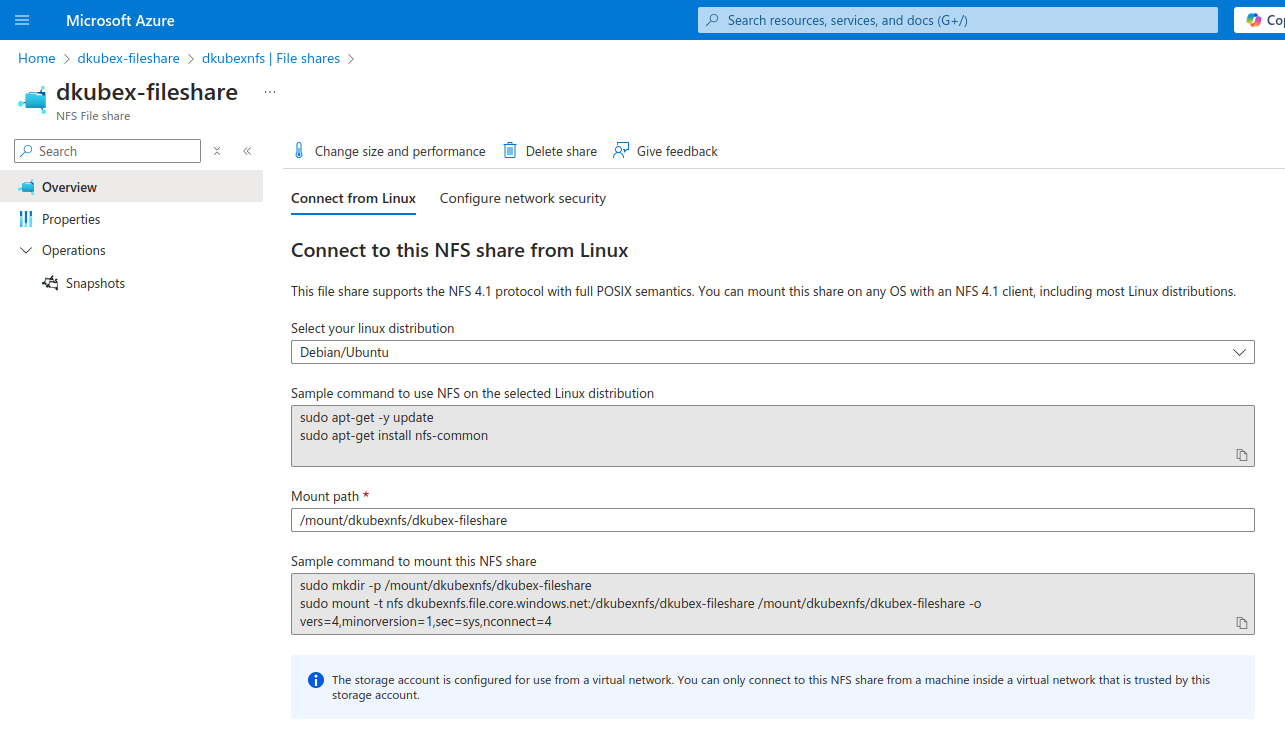Installation: Creating an NFS Server on Azure Console¶
Installing DKubeX on RKE2 Cluster on Azure
Reference
For a detailed guide regarding creating an NFS server on Azure console, please refer to this documentation: Tutorial: Create an NFS Azure file share and mount it on a Linux VM using the Azure portal.
To create an NFS server on Azure console, go through the following steps:
Go to Microsoft Azure Portal and log in with your Azure credentials.
Click on the search bar provided at the top of the home page and search for Storage accounts. From the dropdown that appears, click on the Storage accounts option under Services. The storage accounts page will open.

First, to create a storage account, click on the Create option and use the following steps.
On the
Basicstab, provide the following information. Once done, click on the Review + create button at the bottom of the page.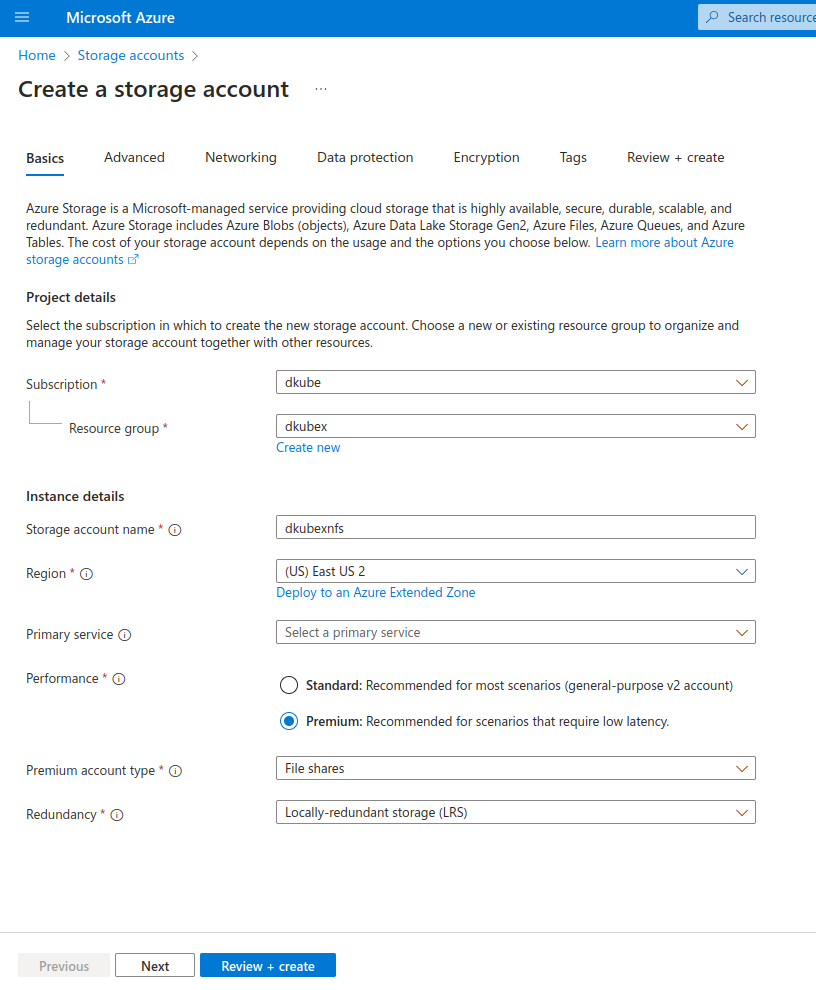
Choose your Subscription and Resource group from the dropdown lists provided.
On the Storage account name field, provide an unique name for the new storage account. The name must be 3 to 24 characters long, and can contain only lowercase letters and numbers.
Choose the cloud region in which you want to create the storage account from the dropdown provided in the
Regionfield.On the
Performancefield, choosePremium.On the
Premium account typefield dropdown, chooseFile shares.
Once you click on the Review + create button, storage account validation will begin. Once the validation is finished, click on the Create button in the bottom of the page. This will initiate, submit and deploy the storage account.
Once the deployment is complete, click on the Go to resource button. This will open the overview page of your storage account.
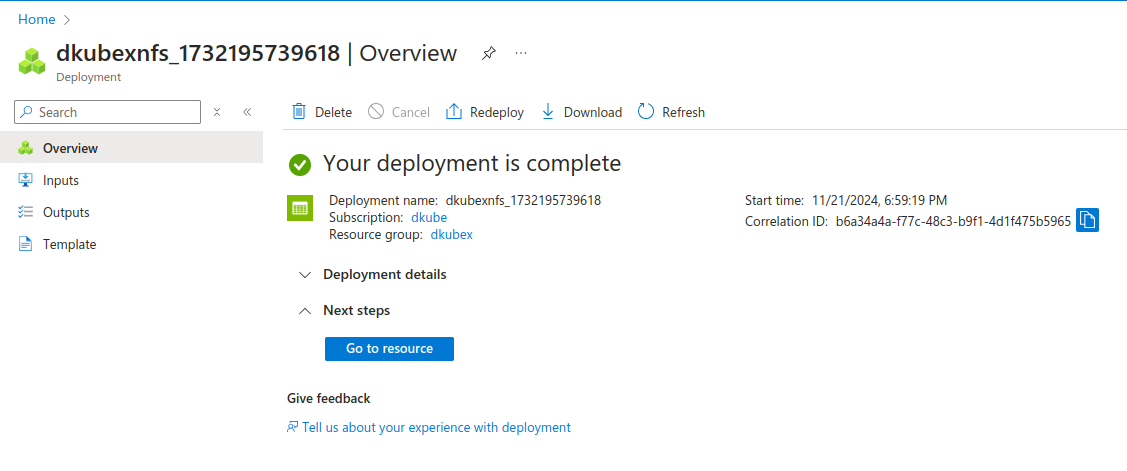
To create a NFS file share, use the steps provided below.
On the storage account overview page, click on the Data storage dropdown on the sidebar menu and then click on File shares.
Click on the
+ File sharebutton.On the
Basicstab of the New file share page, provide thje following information. Once done, click on the Review + create button at the bottom of the page.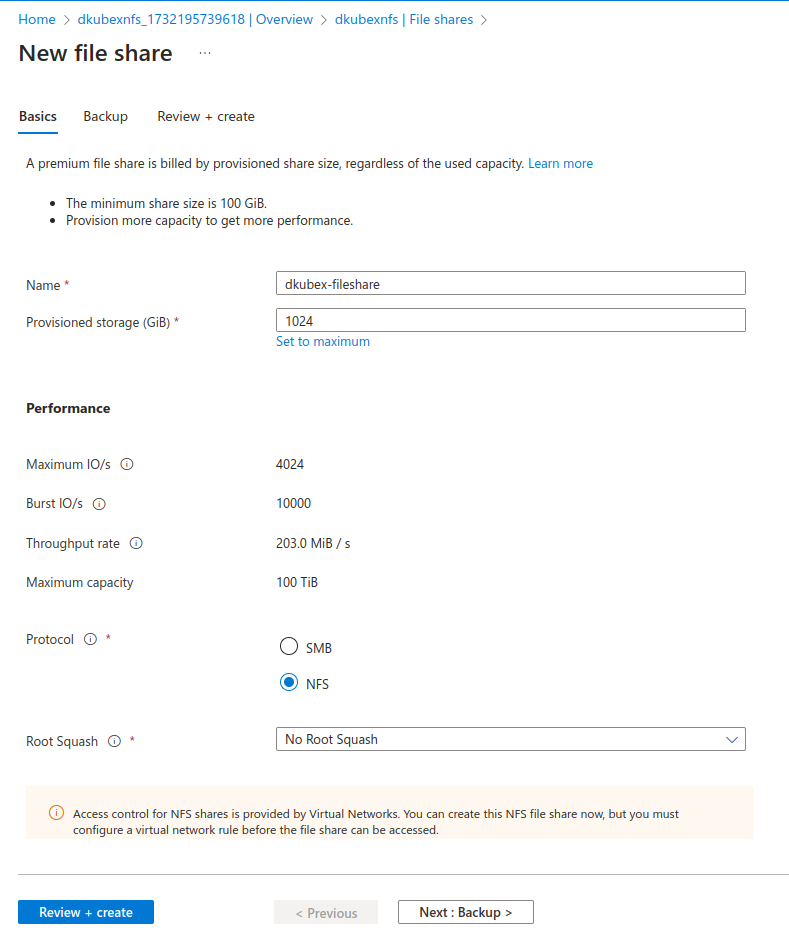
On the
Namefield, provide an unique name to the new file share. File share names can contain only lowercase letters, numbers, and hyphens, and must begin and end with a letter or a number. The name cannot contain two consecutive hyphens.On the
Provisioned storage (GiB)field, provide the provisioned share size in GiB.On the
Protocolfield, selectNFS.On the
Root Squashfield dropdown, selectNo Root Squash.
Once you click on the Review + create button, validation for the file share will start. Once the file share passes validation, click on the Create button at the bottom of the page. The file share creation and deployment will start.
Once the file share deployment is complete, set up the network configuration and secure transfer setting for the file system.
To set up network configuration for the file share, go through the following steps.
On the
Connect from Linuxtab of the Overview page of the new NFS file share, under the Network configuration section, click on the Review options button. The Network security options page will open.
Click on the Setup a private endpoint button to open the Networking page.
Click on the
+ Private endpointbutton.On the
Basicstab of the Create a private endpoint page, provide the following details. Once done, click on the Next : Resource > button at the bottom of the page.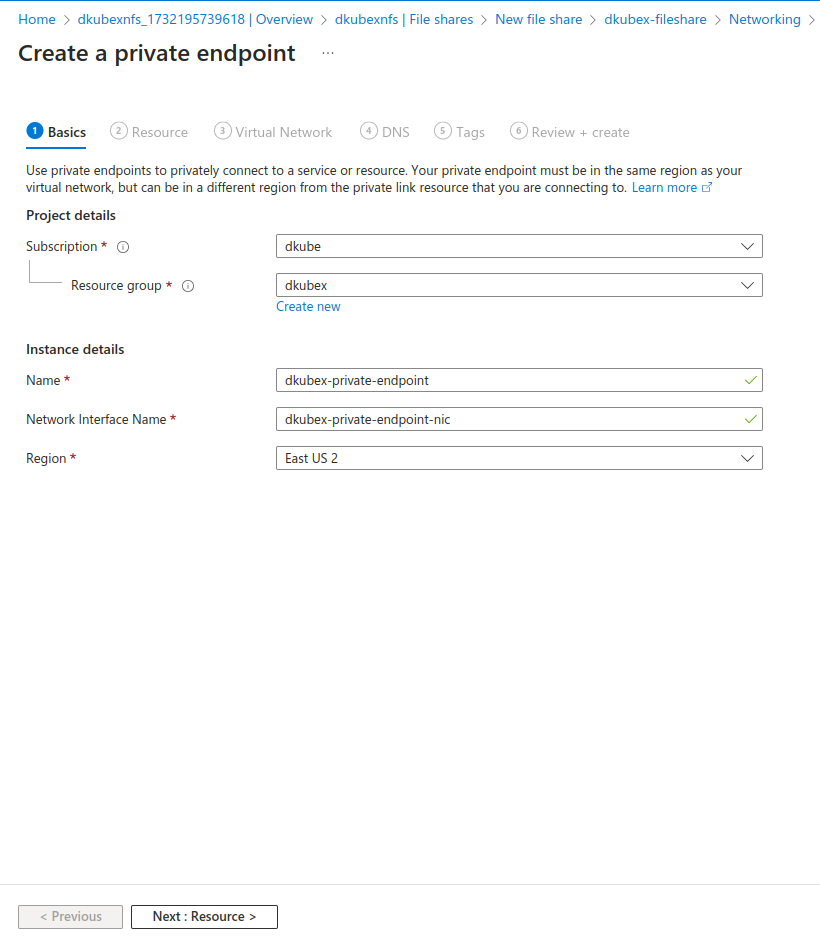
Select your subscription and resource group details from the
SubscriptionandResource groupdropdown.On the
Namefield, provide a unique name to the private endpoint. The name must begin with a letter or number, end with a letter, number or underscore, and may contain only letters, numbers, underscores, periods, or hyphens.On the
Regionfield dropdown, select the same region as your service account that you created earlier.
Keep clicking on the Next : buttons until you reach the
Review + createtab. This will autofill all necessary information in the other tab and final validation for the private endpoint will start. Once the validation is passed, click on the Create button at the bottom of the page which will initialize, submit and deploy the private endpoint.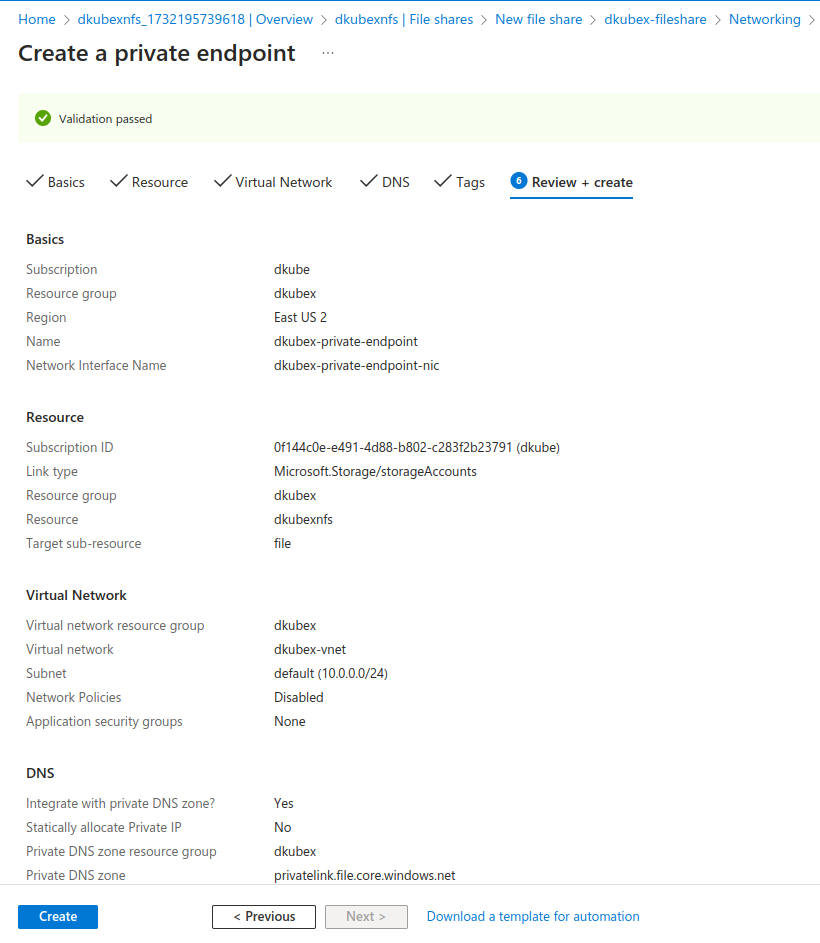
Once the deployment is complete, go back to your new file share page by using the following steps.
Click on the search bar provided at the top of the page and search for Storage accounts. From the dropdown that appears, click on the Storage accounts option under Services. The storage accounts page will open.

Click on the new storage account name that you created earlier from the list of storage accounts provided in the Storage accounts page.
Click on the Data storage dropdown on the sidebar menu and then click on File shares.
Click on the new file share name that you created earlier from the list of file shares provided. The overview page for the new file share will open.
To set up secure transfer setting, use the steps provided below.
On the
Connect from Linuxtab of the Overview page of the new NFS file share, under the Secure transfer setting section, click on the Change setting button. The Configuration page for the storage account will open.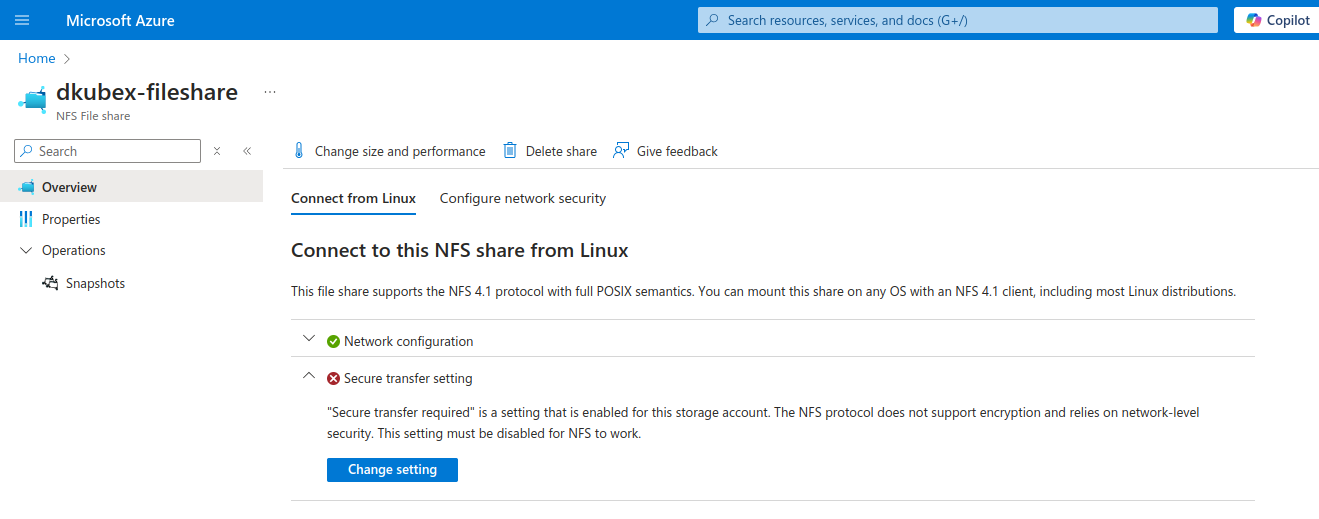
On the
Secure transfer requiredfield, select theDisabledoption.Click on the Save button to save the configuration. The storage account configuration will be updated.
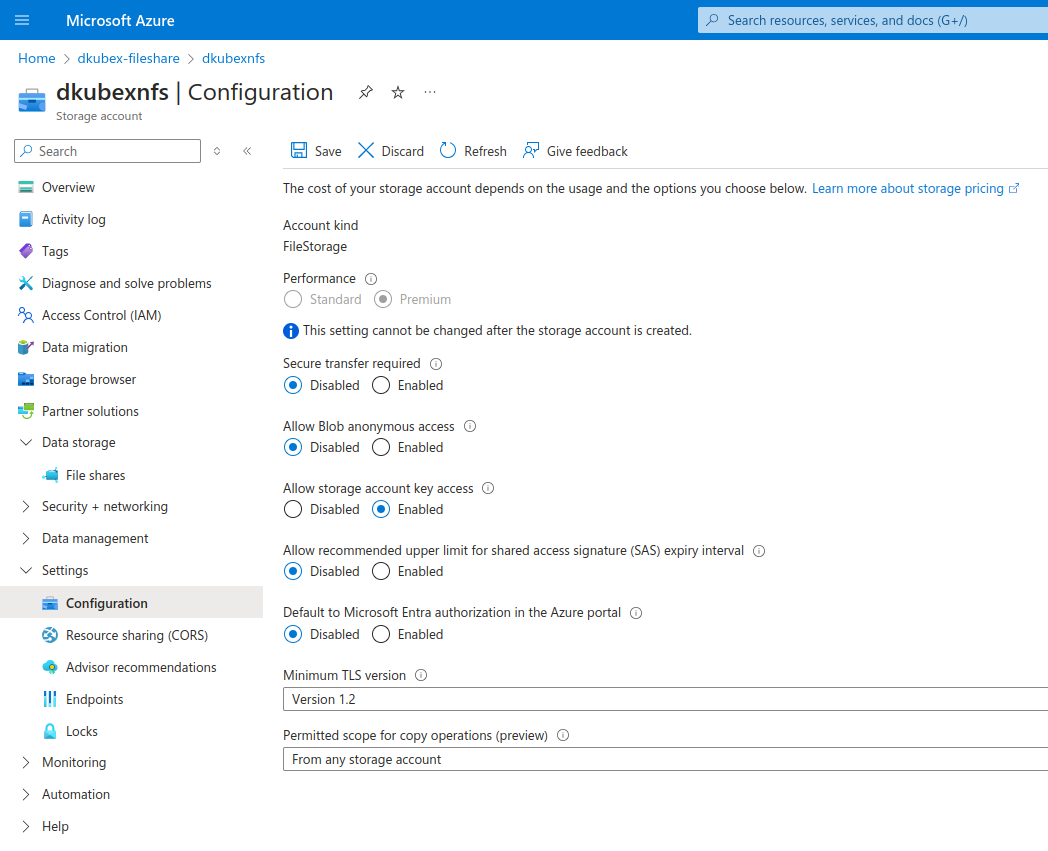
To get the mount path, URL and command to mount the file share, go through the following steps.
Click on the Data storage dropdown on the sidebar menu and then click on File shares.
Click on the new file share name that you created earlier from the list of file shares provided. The overview page for the new file share will open. This page will now contain the mount path and the sample command to mount this NFS share. The sample command also contains the NFS share mount URL.
